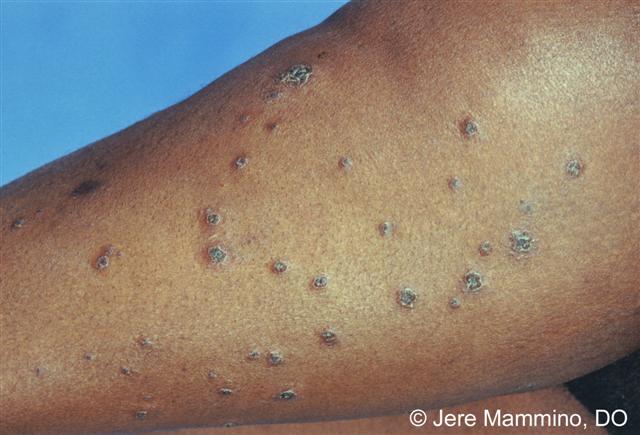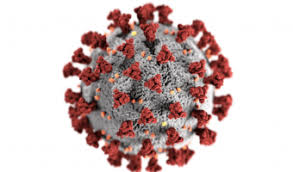Top 5 Healing Home Remedies for Eczema

The ”itch-scratch cycle” is about as vicious as they come, and anything that induces it has the full capability to bring almost unbearable discomfort, as those suffering with eczema know well. Eczema is a general term used to describe varying skin conditions that result in inflamed and discolored skin. Typically the skin is red, dry, inflamed, and occasionally blisters or crusts form.

These home remedies for eczema will focus on strengthening your skins barrier, filling in those gaps, and retaining moisture, as well as focusing on addressing specific troubles like itching and inflammation.
1. Bust out the clay
A lot of damage occurs when you are driven mad with the need to scratch and itch at eczema. Little sores can open, scab over, and are easily picked off again, which gives your skin no time to heal. Scratching will also only worsen inflammation, and while you may feel temporary relief, will continue a vicious cycle. French green clay, rich in magnesium as well as calcium, iron, potassium, and other minerals, makes the perfect paste that will stop the pain and itching in its tracks, and bring down heat and inflammation. The clay gets its green hues from decomposed plant matter-make sure that it is actually green, or it’s not the real stuff! You can make the paste with water or witch hazel. Witch hazel adds a little something extra in terms of relieving the itching and helping with eczema that may have weeping crusts or blisters.
You will need…
-1/2 cup of green clay
-Water or witch hazel extract
Directions
Mix enough water or witch hazel extract into the clay to form a creamy paste. Apply directly to the affected area and let it dry. Once it has dried, rinse it off under cool water and gently pat dry with a soft, clean, cloth. If you have any left over, store it in a glass jar with an airtight lid. If it dries out, add some water or witch hazel to reconstitute it.
2. Dab some honey on it
Honey performs all the staple tasks needed to relieve symptoms of eczema. It’s anti-microbial, anti-inflammatory, helps speed up the healing process of broken skin, and it’s a humectant (draws water to it.) The downside is that it can get sticky, so this is best when used over small areas, rather than slathered all up and down your legs and arms.
You will need…
-Organic, raw, honey
-Bandage (optional)
Directions
Rinse your hands and pat them dry. Apply a thin layer of honey over the affected area. You can cover it with a bandage to keep it from rubbing off on anything, but I personally prefer to “let it breathe.” Leave it on for 20-30 minutes then rinse off with cool water, pat dry, and reapply another thin layer of honey 3 times throughout the day.
3. Supplement with fish oil
I know, I know, fish oil is everywhere and it will cure everything right? No. Of course not. But it has been shown to help lessen the severity of some people’s eczema, particularly the itching. Research has shown that those with atopic eczema seem to have a lower rate of essential fatty acids breaking down into their metabolites, and lower rates of getting those fatty acids up into the skin cell membranes closer to the surface of the skin. N-6 and n-3 fatty acids are particularly important in maintaining normal skin function and, surprise surprise, fish oil is rich in both. Taking a daily dose can help your body produce more of the stuff you need on the inside, so you don’t have to worry so much about the outside.
You will need…
-Fish oil
-Orange juice (optional)
Directions
For both capsules and liquid, follow the dosing on the back of the bottle. If you are using liquid, mix it into some orange juice first. I find it takes away flavor, odor, and any lingering traces of fishiness that capsules can leave.
4. Bring on the coconut oil
Let’s start with the most straightforward and simple eh? Coconut oil does a great job of sinking into the skin and filling in that intercellular space that’s opened up and caused you to lose moisture. It’s a lipid, of course, and fats and oils are what you need to prevent your skin from drying out and becoming more irritated.
You will need…
-Coconut oil
Directions
Rinse your hands with water and pat them dry. Rub the coconut oil onto the affected areas, and let it dry. Apply throughout the day as needed.
5. Make a soothing butter
When it comes to soothing those dry, itchy, painful patches of skin, nothing can really take the place of a good body butter when it’s needed. This combines 4 fantastic healing ingredients that make a spectacular healing butter-jojoba oil, shea butter, coconut oil, and beeswax. Shea has a high content of non-saponifiable fatty acids, namely stearic and oleic. Non-saponifiable just means it cannot be saponified, or hydrolyzed, and converted to soap. Many of its healing benefits come from these fatty acids and their wonderful ability to repair, heal, and soften damaged skin. It can also help reduce inflammation, which is huge when it comes to eczema. Beeswax is mainly just the medium used to thicken this butter, but it also helps protect and soften skin. Jojoba and coconut oil are good additions for all the reasons listed in the two remedies above!
You will need…
-2 tablespoons shea butter
-2 tablespoons beeswax
-6 tablespoons of coconut oil
-4 tablespoons of jojoba oil
-Lavender essential oil (optional)
-Airtight tins or glass jars
Directions
In a double boiler melt down the beeswax and jojoba completely. Once they are melted add in the coconut oil and stir until it is fully melted. Finally lower the heat a tad and add the shea butter, stirring it as it melts. Shea butter gets added last as it is a little more heat sensitive, and can get grainy further along its shelf life if it’s been over-exposed. Pour the mixture into airtight glass jars and, if using, add a drop or two of lavender essential oil and give it a little stir. Place the cover on and allow it to cool. Apply liberally to affected areas as needed.




